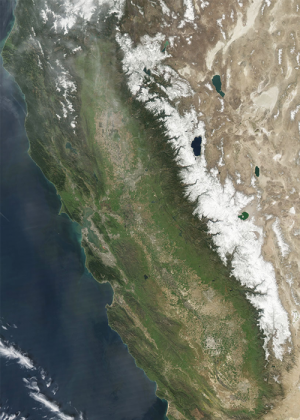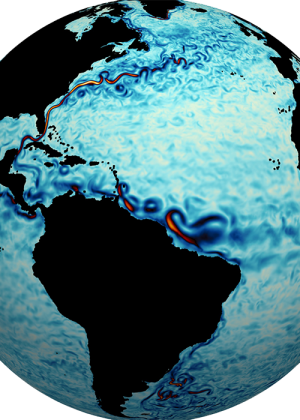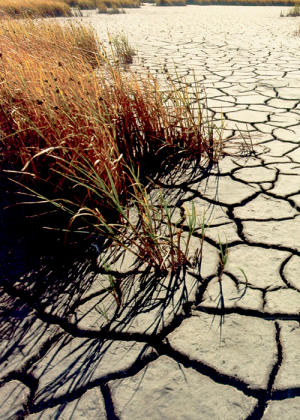Climate Science Research
Providing scientific tools for assessing climate change and quantitatively understanding influences that human activities have on our climate.
Lawrence Livermore researchers apply high-performance computing and expertise in fundamental sciences such as meteorology, climatology, applied mathematics and computational science to the problem of understanding and predicting how the Earth’s systems evolve on time scales from a few years to several centuries.
Scientists compare detailed and rigorous observations from surface, atmosphere, satellite, and oceanographic measurements with outputs from computer models. These results are used to improve the models as well as to search for patterns in climate, and their causes.
Livermore’s climate research began in 1960 with development of the world’s first atmospheric general circulation model, and continues through the present day with research efforts addressing the performance of climate models, regional climate effects, and their impacts on national security and Earth’s living systems. The computational intensity of these models helps drive the development of more and more powerful computers, software, and data management, which in turn benefits Livermore’s stockpile stewardship and other security missions.

Livermore scientists work to understand the natural variability of the climate and to detect changes that are unlikely to be caused solely by natural variations. Through modeling and research, “detection” demonstrates that an observed change is unlikely to be caused by natural variation, and “attribution” demonstrates that an observed signal is consistent with a given combination of human and natural forcing.
Scientists at the Laboratory also study the regional effects of climate change, those limited to a geographical area rather than to the Earth as a whole. Running models at high spatial resolution produces more realistic models at this scale because they can better represent physical processes. Livermore has contributed substantially to the study of regional effects on water availability, snowpack, and irrigation in the western United States.
To gain confidence that models are correctly representing climate and atmospheric processes, Livermore practices model assessment through intercomparisons of results from different models with one another and with real data. It uses other techniques as well, such as uncertainty quantification. The Program for Climate Model Diagnosis and Intercomparison has coordinated many projects to compare and evaluate model results.

- In the 1960s, Livermore created the world’s first atmospheric general circulation model (the Livermore Atmospheric Model). It calculated temperature, winds, humidity, clouds, precipitation, the day-and-night cycle, and weather systems around the globe.
- In 1989, the Laboratory took the lead in the Program for Climate Model Diagnosis and Intercomparison, an international program designed to evaluate the many climate models developed by leading scientific organizations.
- Livermore scientists participate in the assessments (five to date) of the Nobel prize-winning Intergovernmental Panel on Climate Change, established in 1988 to provide the scientific basis for the understanding of climate change.
- The Laboratory leads the Earth System Grid Federation (ESGF), an R&D 100 award-winning international high-volume data-management system that allows researchers from all over the world to securely store and share observational data, models, analyses, and results.
- Livermore leads the Energy Exascale Earth System Model (E3SM) program. E3SM links Earth system and energy models into a single system that can assess how changes in energy use impact Earth’s ecosystems, water availability, snowpack, sea levels, and other factors.

The evidence that human influences affect the climate builds steadily from research conducted by the scientific community worldwide. To fulfill its national security mission, Livermore continues to study how Earth system changes might affect and pose security threats to the U.S. and its economy, improving climate models through high-performance computing and model assessment.
Livermore scientists are participating in the next assessment of the Intergovernmental Panel on Climate Change, to provide the scientific research that can inform responses to climate change. Its researchers are also examining the impacts of clouds and aerosols on regional climate changes, such as how climate change may affect the headwaters of rivers that provide irrigation in the western United States.
Climate Research and National Security
Understanding how the Earth system evolves is one of the most difficult of science’s many grand challenges. The problem requires billions of data points from the surface, sea, air, and space-based observations. These data points are used to model the system on the most powerful computers through the application of physical sciences and applied mathematics and computational science.
Unexpected rapid environmental change poses risk to national security, the economy, and public health. Livermore has been studying the climate and Earth system since the beginning of computer simulation. Its codes, developed to understand the complex dynamics of nuclear detonations, were adapted to study their impacts on the atmosphere, and eventually, the atmosphere itself.




